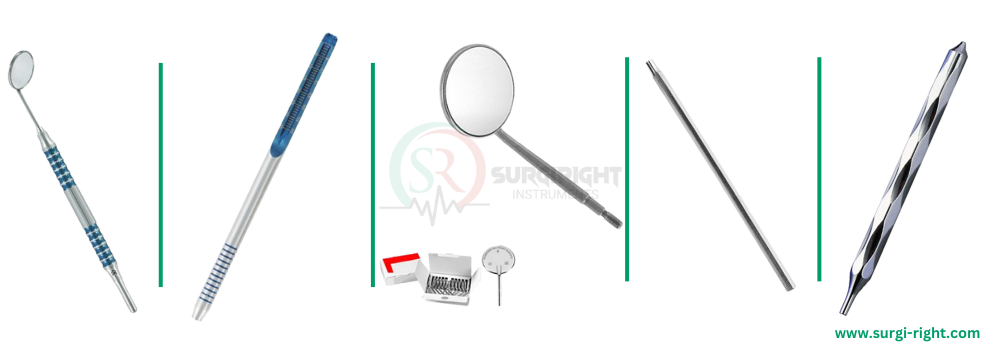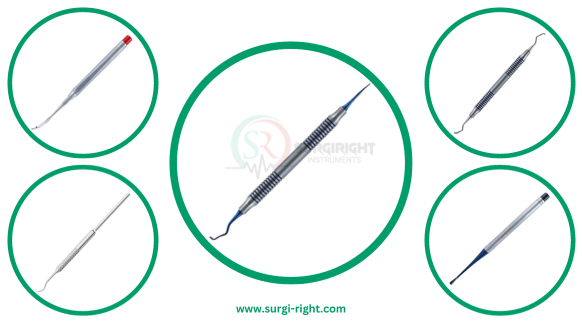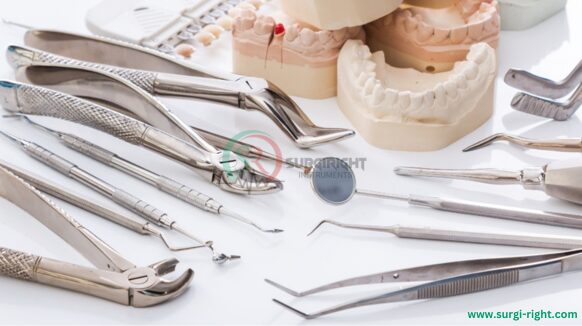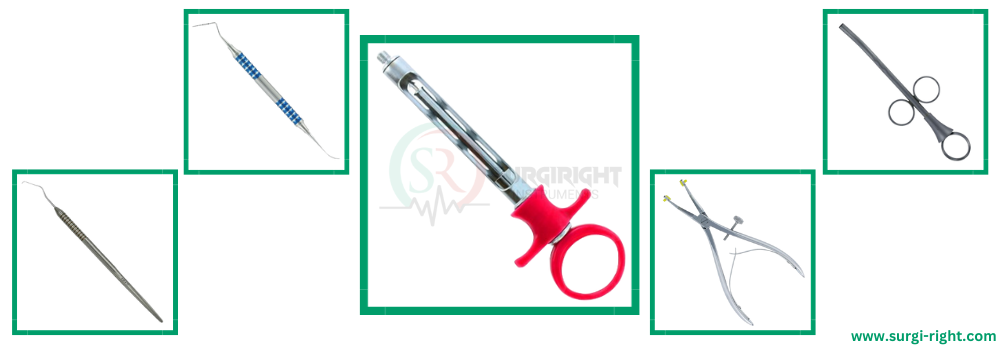Orthodontics is a specialized field of dentistry that focuses on correcting misaligned teeth and jaws. To achieve successful orthodontic treatment, dental professionals rely on a wide range of instruments specifically designed for this purpose. Whatever, in this comprehensive guide, we will explore the different types of orthodontic instruments, their functions, and how they contribute to achieving optimal patient outcomes.
Common Types of Orthodontic Instruments
The world of orthodontics is a fascinating one, where skilled professionals use a variety of tools to transform crooked smiles into dazzling masterpieces. While the most visible element of orthodontic treatment is often the braces themselves, many other instruments play crucial roles in achieving a perfect bite. Let’s explore some of the most common types of ortho instruments and their functions:
Orthodontic Pliers & Cutters
Orthodontic pliers and cutters are essential tools used by orthodontists to perform a variety of tasks. These orthodontic tools are designed to manipulate wires, bend brackets, and cut archwires with precision. However, there are different types of pliers and cutters, each serving a specific purpose.

For example, the Adams pliers are commonly used to remove archwires, while the Weingart pliers are ideal for adjusting brackets. The versatility of orthodontic pliers and cutters allows orthodontists to customize treatment plans and ensure optimal alignment of the teeth.
Retractors, Mouth Props & Gags
Orthodontic procedures utilize retractors, mouth props, and gags to ensure optimal access and visibility. These tools help keep the patient’s mouth open, allowing the orthodontist to work comfortably and efficiently.
Mouth props, also known as cheek retractors, hold the cheeks and lips away from the treatment area, providing a clear field of view. Gags, on the other hand, are used to hold the patient’s tongue down, preventing interference during procedures. These basic orthodontic instruments not only facilitate effective orthodontic treatment but also enhance patient comfort during the process.

Perforated Impression Trays – Orthodontic Instruments
Perforated impression trays are used to obtain accurate dental impressions for the fabrication of orthodontic appliances. These trays come in various sizes and designs to accommodate different arch shapes and sizes. Moreover, the perforations allow the impression material to flow through, ensuring precise replication of the patient’s teeth. By using perforated impression trays, orthodontists can create well-fitting appliances, such as retainers and aligners, which play a crucial role in maintaining the results of orthodontic treatment.
Rubber Dam Instruments
During orthodontic procedures, practitioners commonly use rubber dam instruments to isolate specific teeth or areas of the mouth. They stretch a thin sheet of latex or non-latex material over a frame and secure it around the tooth. This isolation technique helps to maintain a dry working environment and prevent contamination of the teeth during procedures such as bonding brackets or applying dental adhesives.

Rubber dam instruments, such as clamps and forceps, are used to securely place and remove the rubber dam, ensuring optimal isolation and patient comfort.
Other common types of orthodontic instruments include:
Orthodontic Instruments for Oral Hygiene Maintenance
Maintaining good oral hygiene is crucial during orthodontic treatment to prevent tooth decay and gum disease. Orthodontic instruments designed for oral hygiene maintenance play a significant role in ensuring patient compliance and achieving optimal oral health outcomes. Some common ortho dental instruments for oral hygiene maintenance include:
- Interdental Brushes – Interdental brushes are small, cone-shaped brushes specifically designed to clean between the teeth and around orthodontic appliances. These brushes have bristles that can reach the tight spaces between brackets and wires, removing plaque and food debris effectively. Additionally, regular use of interdental brushes promotes good oral hygiene and reduces the risk of cavities and gum inflammation.
- Orthodontic Floss Threaders – Orthodontic floss threaders are useful tools that help patients with braces effectively floss their teeth. These dental ortho instruments allow the floss to pass underneath the archwire, enabling thorough cleaning between the teeth and gums. However, the precise delivery of orthodontic floss threaders to clinics and dental offices relies significantly on efficient freight and logistics operations.
For instance, Super Middle East freight and logistics companies specializing in medical supplies ensure timely and secure delivery of these crucial orthodontic instruments to dental practices worldwide. Furthermore, by incorporating orthodontic floss threaders into their oral hygiene routine, patients can maintain healthy gums and reduce the risk of dental problems.
- Water Flossers – Water flossers, also known as oral irrigators, use a steady stream of water to remove plaque and debris from the teeth and gums. This device is particularly beneficial for individuals with braces as it can reach areas that are difficult to access with traditional flossing methods. Although, water flossers provide an additional level of cleanliness and can contribute to improved oral health during orthodontic treatment.
Sterilization and Maintenance of Orthodontic Instruments
To ensure the safety and efficacy of the best orthodontic instruments, proper sterilization and maintenance protocols must be followed. Sterilization eliminates harmful microorganisms, reducing the risk of cross-contamination and infection. Here are some essential steps for sterilizing and maintaining dental instruments:

- Pre-Cleaning | Before sterilization, all instruments should undergo pre-cleaning to remove visible debris and contaminants. You can do this by rinsing the instruments under running water or using a cleaning solution. Additionally, ultrasonic cleaners can help remove stubborn debris from hard-to-reach areas.
Looking for more insights on instrument cleaning? Check out our blog on “5 Best Practices for Cleaning Surgical Instruments” for expert guidance.
- Sterilization Methods | There are various sterilization methods available for orthodontic instruments, such as steam autoclaving, chemical sterilization, and dry heat sterilization. Each method has its advantages and recommended guidelines. However, it is important to follow the manufacturer’s instructions and local regulations to ensure proper sterilization.
- Instrument Maintenance | Taking care of instruments used in orthodontics is super important to make sure they last long and work their best. After every use, it’s key to clean them well and give them a good check for any damage or signs of wear. If any instruments seem dull or damaged, it’s best to get them fixed up or swap them out. This way, the quality of orthodontic treatment stays top-notch.
Conclusion: Choosing the Right Orthodontic Instruments for Your Practice
In conclusion, orthodontic instruments are essential tools that play a vital role in achieving successful orthodontic treatment. From pliers and cutters to impression trays and oral hygiene maintenance instruments, each instrument serves a unique purpose in the orthodontic workflow. By selecting the best dental instruments and following proper sterilization and maintenance protocols, dental professionals can provide their patients with the highest level of care.
At Surgi Right, we understand the critical role that quality instruments play in your practice. As a leading manufacturer dedicated to precision and innovation, we strive to provide dental professionals with top-tier orthodontic instruments designed to elevate patient care standards. Remember, choosing the right instruments for your practice is not only about providing excellent care but also about ensuring patient comfort and satisfaction. By investing in the appropriate instruments, you can streamline your workflow and deliver exceptional orthodontic treatment experiences to your patients.

